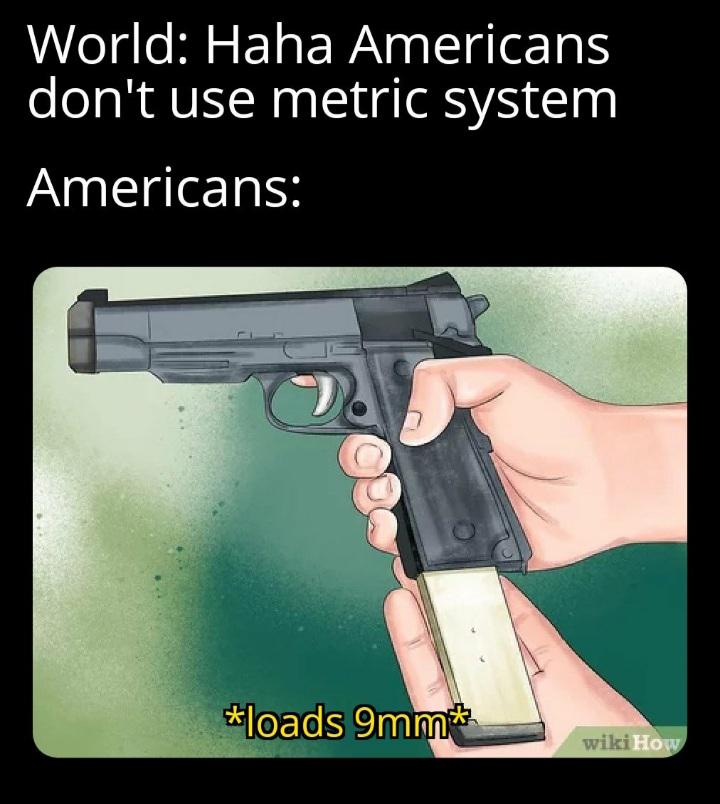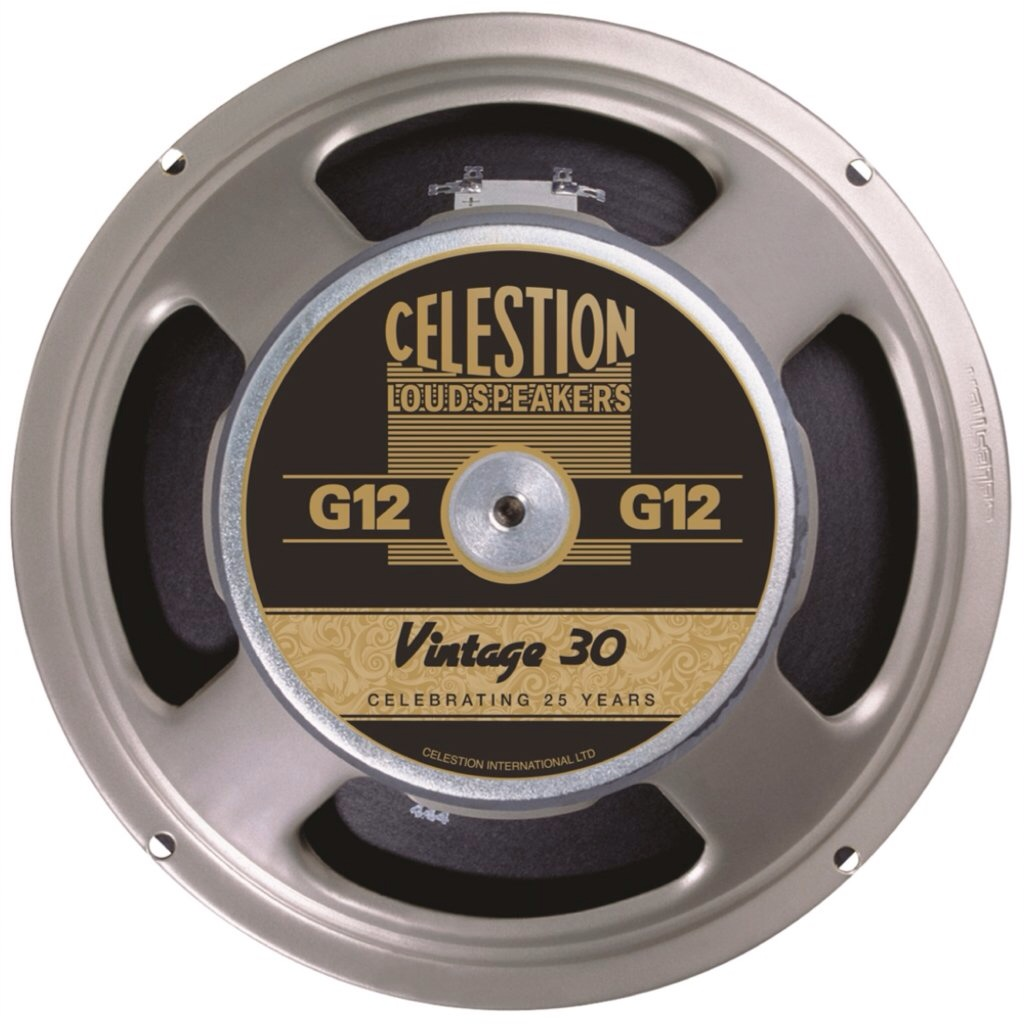Ayo the car thing is absolute bullshit.
10mm bolt for the fuckin brake caliper but 3/8 for the fuckin slide bolts?
Get the fuck outta here
GM has been using all metric for years now.
Don’t know what car you’re driving but I think you’re just using the wrong size wrench/Allen key
My last car was a 2012 ford fiesta. The lug nuts are 19mm. The caliper bolts were 10mm and the slide bolts were 3/8.
The car before that was a 2001 cavalier. Not only did it have metric and standard bolts but the slide bolts were fuckin Allen heads.
Like literally why?
Probably because they were made by American car manufacturers and couldn’t make a logical or consistent design decision if their lives depended on it.
Like I’m not even an engineer and I’m just screaming about the dumbest decisions made by people who make more in a week than I make in a year 😭
The last one I ran into is that the Windshield Washer Fluid Reservoir in a Chevy Bolt is about 1/4 cup smaller than a standard 1 gallon jug of fluid. You could have expanded the diameter of the fill tube by less than 1/8 of an inch and fit that remaining 1/4 cup of fluid in there.
Yeah, but the difference is that they made it so you need an extra socket or an alan wrench. I think you’d have made dumb decisions that were a little bit more deadly.
It’s usually cost. They have tooling to produce components that have probably been around decades. The cost of retooling just to change the fastener sizes may not be economically viable. Eventually these legacy components will be phased out and it will be 100% metric.
I especially hate the T series bolts
Don’t forget the most important US measurements of them all: 5.56, 7.62, 9, etc.
.308
Oh wait…
pls explain 🙂
.308 is caliber in inches thus not metric.
why do they use decimal for imperial units?
I have a 77/250 rifle at home because I’m a real American.
🫡🇺🇲
It means the round fired by the gun is .308 inches in diameter, or 7.62mm. Gun caliber is measured in inches for Imperial.
Because they couldn’t rationalize using fractions.
Machining is often done in thousandths of an inch.
so why don’t they write 1/1000 in then?
Because, unlike internet pendants, machinists have shit to do.
In the UK, weed is measured in authentic receding British imperial units where an ounce weighs one less gram every year.
Hah, nice
The army uses metric almost exclusively. It’s where I learned it.
Yep. One “klick” is one km.
I think the main problem US people have with metric is their aversion to anything that has more than two syllables.
Far worse: It’s laziness.
I was teaching a friend how to make ravioli (yes, really) from the class I took while over in Italy. I bring my scale to measure the dough and the first thing she does is use the scale to get the right measurements and then, scrapes the contents into an imperial measuring cup. Worse, she was totally pissed when the semolina was not a perfect match to the 00 flour (mass and all that).
She is a tried and true American. She just wants to whip out her 1 cup without measuring weight and can’t fathom why the dough just “wasn’t like I taught her”.
By the way, the super secret Italian recipe is this: Ingredients per 2 people (spaghetti or tagliatelle) 100 grams total of: 50% white superfine flour 50% semolina Add 1 egg per 100 grams of flour
For ravioli, you want more superfine (00) flour so the pasta sticks together better. So like above, 100 grams total of: 60% superfine flour 40% semolina
Add 1 egg per 100 grams of flour.
But I want it to be one cup of egg!
Medium or large eggs, (the most common size) is about 5 eggs per cup, 4 per cup of extra large. - YMMV slightly depending the exact eggs your have.
Of course there’s a cup measurement for eggs.
What was I thinking.
To be honest, ain’t nobody using that measurement unless you are using commercial canned shelled eggs for speed. And even then you are probably just going to open the can and dump the whole thing. But it does show that the system is complete.
Rare indeed would be the home cooks/bakers that used that.
Go for it
What most people miss about weight vs volumetric measurement when cooking is that it’s all about ratios. And if you had been paying attention in math class, you would know that ratios are unit less. Which means as long as you keep the proper ratio between the ingredients, it matters not one whit on how you measure them. You can weight, you can use cups or spoons or handfuls and pinches to achieve the correct ratio. You even demonstrate this by stating that the ratio of flour to semolina is 1:1 or 3:2 depending on the end use. And one extra large egg, (about 55 grams or 2oz), should make for a decent conversion.
But before you change units of measure, you need to be sure that the changes still hold to with the tolerances of the recipe. Something most people can’t do very well - much like your friend.
And never forget - the true masters of fresh pasta making at home are all those little old Italian Grandmothers. And they are probably just eyballing it all anyway.
Which means as long as you keep the proper ratio between the ingredients, it matters not one whit on how you measure them. You can weight, you can use cups or spoons or handfuls and pinches to achieve the correct ratio.
The problem with converting a 1:1 ratio of ingredients measured by weight and a 1:1 ratio of ingredients measured by volume is density. Two different kinds of flour may pack differently and thus have different densities enough to effect the consistency of the dough. And with something like flour, a cup of sifted flour is less wheat and more air than a cup of scooped flour.
It’s all about the ratio. The density does not matter as much as you seem to think. Plus there is a tolerance built in. Just think, you so carefully measure everything out with weight (did you get the weight exact?). Then you randomly toss a bunch of bench flour down when you kneed the dough. You have literally no clue as to how much weight of flour/semolina the dough picked up. So it really doesn’t matter as much as you might think. Now your scale does make it easier for you. And that’s fine, I have a kitchen scale and use it regularly myself. But I understand it doesn’t matter as much as you seem to feel it does.
And again, those Italian Grandmothers are just eyeballin’ everything anyway.
To be fair you sound like Data from TNG Season 1 if you say something like “Give them a centimeter, soon they have a meter.”
Except in electronics. Everything is still .1 inch headers. We invented too many electronics and it’s stuck now.
It is also annoying that the electronics industry prefers the term “mil” for 1 thousands of an inch. Why not use “thou” like machinist use?
Not all of it though. Like JST plugs, barrel connectors, breadboard pin spacing, etc.
Not to mention that every single food product has metric measurements on the label as well.
Pisses me off so much that we don’t standardize that in Canada, they still show $/lbs as the main price advertised but the item is weighted in kg with the $/kg written in a smaller font.
That’s ok, your animal welfare standards are so shockingly horrific, you can’t export any food anyway 😂
Oh, man, you got us!
Wait. I’m being told that the US is the largest exporter of agricultural goods in the world, exporting 20% of its agricultural production.
My favorite fuckery is when Europeans see shit like 25.4mm, 27.2mm or 31.8mm and it’s because of imperial bullshit

Bicycle parts entered the chat
The entirety of the American scientific research community, which happens to be the most productive research community in the world, slides in with a wink 😉
I thought, you were saying that the USA is still researching how to build one of these “bicycles”. 🙃
The instruction manuals got banned.
Oh fuck the bicycle world for that, as much as I like working on my bike, it’s a fucking pain to figure out the size of parts!
At least in this case it’s not America’s but Britain’s fault. I primarily blame the small arms industry in Birmingham! :)
When I was young I lived in Puerto Rico for a few years (1980’s). Milk was sold in either one litre cartons or one gallon jugs. Distances in road signs and road markers were in kilometers but speed was in miles per hour. Fuel was sold in litres but fuel usage is in miles per gallon.
I believe Canada and the UK do similarly.
Milk yes, car distance no, fuel usage no
Km and L/100km are used in Canada.
Gallon jugs aren’t as common as 4L bagged milk here though
Depends on the province, bags are common in Quebec, Ontario, the Maritimes but not in the provinces west of Ontario and in NFL
Do you say kilometers per litre or miles per gallon?
Edit: re-read. The UK still uses mpg, I believe
No, liters per 100 km, edited because I forgot the 100
But just to fuck with everyone we still refer to it a “mileage” in speech. Cause being a Canadian is suffering.
Seems like a good way to become proficient in both so that you’re more adaptable.
Nah. People just talked distances in fuel tank fractions, fuel dollars or travel time. For example, “how far is the mall?”, ‘about a quarter tank’. Or “how far is San Juan?”, ‘$5 will get you there’. Or " how far is Rio Grande" ’ about ten minutes that way’.
The US sells beverages in 2 liter bottles and milk in gallon jugs. Also any food packaging shows the weight of contents in both standard and metric.
I literally learned lessons on metric in public school
You didn’t have even liter of milk before school?
I did not
Oh, wow. You misseed out a lot. Are you lactose intolerant?
Not the original commenter, but milk is sold in Gallons, half gallons, and occasionally pints in the US
Yes, this is kinda pun.
Also, isn’t cola sold in liters?
Cola is sold in 2 liter bottles, and you can find 1 liter bottles, but 20 oz bottles and 12 oz cans are much more common.
What?
It’s a joke about not drinking milk at all.
Last panel should be the entire US Customary System, which is literally just a rescaling of the SI (“metric” system) units. US Customary is derived directly from SI.
I think most people are aware
You forgot measuring bullets.
Bullets are a weird, dumb one. Yes, kind of. But also: .308, .303, .30-06, .50 BMG .30-30, .45-70, .38, .32, .44, .45, .50AE. Then nonsensically basically all “30 calibre” are the same diameter, which is exactly not quite .3 of an inch. Most of those are calibrated by the metric system (as many imperial measurements are today), but the terminology exists in the imperial system.
And then there’s fuckin gauges for shotguns smh.
Everyone uses guage descriptor for shotgun bores. It’s been around longer than the metric system. And it’s doubtful it will ever change.
Except .410 for some reason. I guess 67 gauge is starting to sound a bit crazy.
But yeah I know. I just think it’s silly.
While it’s pretty much traditional at this point, there was a very good reason for a long time to do it that way. Gauge for muskets/Fowlers is related to the number of round balls of bore diameter that weights 1 pound, (remember this predates the metric system by about 100+ years). And if you owned a firearm, you had to own the proper mold and cast your own lead balls to shoot over an open campfire. You just couldn’t pop down the the sporting goods store and buy some ready made round balls to shoot. Knowing how many round balls per pound lasted into the 1800’s. Because if you were a Longhunter or mountain man fur trapper, it was important to know that your .45 caliber Pennsylvania rifle shot 47 to the pound and a .50 caliber Hawken’s rifle shot about 35 round ball to the pound. so you could easily know how much lead you needed to bring with over the next year in the lonely mountains.
So if you owned a .72 caliber/12gauge musket you knew you would get 12 round balls per pound of lead. If you had a .69 caliber/14gauge, you would have 14 balls. A 20gauge/.62 caliber will give you 20 round balls.
But yes, the era of the metallic cartridges sent things off the rails in naming cartridges. And post WW1, everyone just completely lost the thread. We have .38 Short, Long, Special, and .357 - all the same bullet diameters. And a seemingly infinite number of .22 caliber cartridges that not even god himself can keep track of.
The whole world uses both for various things. Even the countries that “officially” use metric. Specific global industries still use imperial. Canadian and British people are perhaps the most famous for combining the two, but most of Europe also mixes things in here and there.
And of course the whole conversation is Euro-centric and ignores the historical use of traditional measurement systems in Africa and Asia, but somehow that never gets brought up.
Yeah TVs/screens for example are typically in inches anywhere I’ve seen. There might also be the metric listed.
They are indeed usually in inches but that’s probably bleeding back to Europe from the US. And most people don’t actually know how much that would be in metric. It’s sometimes listed but no one I know actually uses those numbers. We just know that 65 is bigger than 55, etc. If we want to know if it fits in our living rooms, then we look at the actual size in cm. I also couldn’t think of anything else that’s imperial, at least here in Germany.
It’s a diagonal measurement so it’s literally only useful for comparing screens.
As long as they’re the same ratio 🤪
Yep. Which is probably why no one bothered to use metric.
It makes sense as an Inch is a good measurement for that. You aren’t going to use mm or meters
TV sizes in Europe are in cm.
but most of Europe also mixes things in here and there.
I hate calories and horsepowers
Let’s not forget that the Apollo space program used SI units at every step, except for displaying it to the astronauts.
And that a very expensive probe crashed into mars instead of landing because NASA used metric for all measurements but one contractor didn’t get the memo.
NASA is also really funny and uses millimeters as their base unit for everything.
Have you ever done physics with non SI units? It is terrible and causes mistakes
Yeah, but you still have work tool measurements in 5/8, 7/32, and 13/64 or whatever the fuck dumbass measurements.
I say this as an American that hates the way tools use measurments here.
I specifically prefer woodworking in fractional inches. I’ve had this argument on Lemmy before and it basically goes:
“But inches bad! Metric good! Fractions bad! Powers of ten good!”
“I mean yeah okay but I nearly never have to divide by ten in the wood shop, I do have to divide by two or three or four, and since we mill stock to finished dimensions that are usually 3/2*x inches, most commonly 3/4” or 3/2" it’s trivial to do. Cutting mortise one third the board’s width in 3/4" stock ends up being exactly 1/4" wide. Easy. The metric world usually mills boards to 19mm, which is pretty close to 3/4" so it’s suitable for the same applications. Show me the line on a metric tape measure that indicates one third of 19mm."
“But Americans use inches so it must be dumb and bad!”
I use metric for quite a lot of things, I learned chemistry and physics in metric in school, I vastly prefer doing mechanical and engineering things in metric. I learned carpentry (structure building) in inches but I could cope with metric there, I learned how to fly in mostly US customary units (distances in nautical miles, speeds in nautical miles per hour aka knots, altitude and runway lengths in feet, pressures in PSI, temperature in °C) I could cope with different units there. I’m not giving up inches in the furniture shop though, because working in fractions works to well.
But yeah the faster we can erase fractional inch wrenches from the world the better. “What’s one size louder than 3/4?” “Ah shit 6/8…12/16, plus 1…13/16.”
Except there’s an easy way to mark thirds: if you have a, let’s say, 27 cm wide board you take the measuring by skewing a little the tape and measuring 30 cm. You mark 10 cm and 20 cm and there you have it: a third of the wide. You don’t even need the precise measure. If you have something with proportional marks you just use it and you get a third no matter the width. It’s like a center finder but with thirds (or fourths or…)
That will likely work for the length or width of boards, but what about thickness? Mark out a mortise and tenon on a 19mm thick board with that technique and tell me how it goes.
This is the kind of shit I’m talking about. You see these kinds of “Nuh uh, it’s not a problem, you just learn all these hacky workarounds” excuses out of the inch-ounce crowd, where you “just have different measuring cups for that” or “our butter packaging has tablespoon markings on it” but in the wood shop it’s the other way around because the physical tasks are inherently easier to express as fractions rather than decimals, so I’m the one saying “I just measure it with my tape measure or combo square or ruler and it’s right.” and the metric crowd keep going “Nuh uh, it’s not a problem, you just learn all these hacky workarounds.”
Or you can do a division and that’s it.
19mm / 3 = 6.3333mm. Come on over here and show me the six point three three three three millimeter line on my metric tape measure.
2" / 3 = 0.666666666 Show me that point in you tape measure 😜
And both cases can be fixed by just skewing a little the tape (19 mm -> 21 mm and 2" -> 2.1". Close to 20°)
2 inches isn’t a common size for stock. 1.5 inches is though.
And you want to come show me 2.1" on my standard tape measure?
Depends what kind of work you do, mechanics work in metric only, construction is in Imperial…
Mechanics work in metric mostly. You still come across some imperial sizes occasionally. Though recently that’s been getting standardized a lot better.
Recently?
Metric has been standard in cars for decades…
Then there’s planes, and trains and also ships. Ships can have parts and systems from god knows when
I mean, that might be true, but I work on a lot of shit that’s right around 20 years old. It’s mostly metric. But I keep a set of standard sockets around that I’ve had to pull out once or twice. Sometimes it’s been because of swollen bolts but sometimes I’m pretty damn sure that’s a 5/16.
I can guarantee it’s either someone that put the wrong bolt there or it’s due to rust.
All American cars have been fully metric since the 90s (with a push during the Carter years as well), Japanese cars since the 60s… Maybe you’ve had to work on a x.5mm bolt but that’s extremely rare.

















